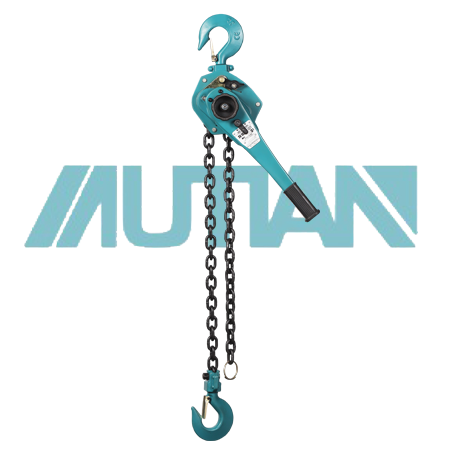 中文版
中文版



Welcome to contact us by phone:0086-0312-7969888
The internal structure of a lever chain hoist consists of several key components that work together to lift and lower loads safely and efficiently. While specific designs may vary slightly between manufacturers, the fundamental components are generally consistent across lever chain hoists. Here's an overview of the internal structure of a typical lever chain hoist:
Frame and Housing: The frame and housing form the outer structure of the hoist, providing support and protection for the internal components. They are typically made of durable materials such as steel or aluminum alloy to withstand heavy loads and rough handling.
Lever Mechanism: The lever mechanism is the primary operating component of the hoist, consisting of a lever handle that operators manually crank to lift or lower loads. Inside the lever mechanism, a ratchet and pawl system converts the linear motion of the lever into rotational motion, allowing the hoist to lift the load.
Ratchet and Pawl System: The ratchet and pawl system is responsible for controlling the movement of the load chain or wire rope. As the operator cranks the lever handle, the ratchet engages with the pawl, allowing the chain or rope to be pulled through the hoist mechanism in one direction while preventing it from slipping backward.
Load Chain or Wire Rope: The load chain or wire rope is the lifting medium used to raise and lower loads. The load chain is typically made of high-strength steel and is designed to withstand heavy loads, while wire rope versions use a durable steel cable with similar lifting capabilities.
Chain Guide and Sheave: Inside the hoist housing, there may be a chain guide and sheave system that helps guide the load chain and maintain proper alignment as it moves through the hoist mechanism. This ensures smooth operation and reduces wear on the chain or rope.
Brake Mechanism: Lever chain hoists are equipped with a brake mechanism to control the speed and prevent the load from descending too quickly when the lever is released. The brake may be friction-based or mechanical, depending on the design of the hoist.
Lifting Hook: At the end of the load chain or wire rope, there is typically a lifting hook or attachment point. This hook is used to securely connect the hoist to the load being lifted. It may feature a safety latch or locking mechanism to prevent accidental disengagement.
Safety Features: Lever chain hoists are equipped with various safety features to protect operators and prevent accidents. These may include overload protection mechanisms, which prevent the hoist from lifting loads beyond its rated capacity, as well as safety catches on the lever to prevent accidental operation.
Overall, the internal structure of a lever chain hoist is designed to provide reliable and efficient lifting capabilities while ensuring the safety of operators and the integrity of the load being lifted. Regular maintenance and inspections are essential to keep the internal components in good working condition and prolong the hoist's service life.
X